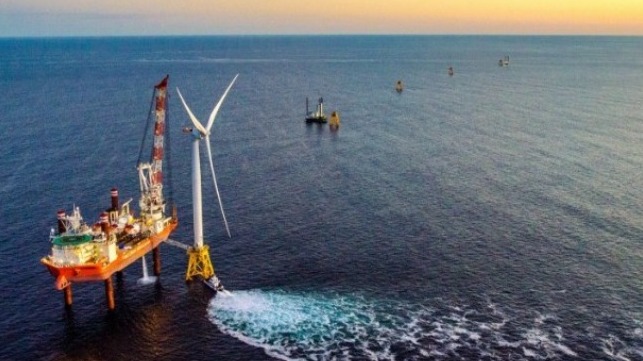Financing Jones Act Wind Farm Vessels

Offshore wind is the big new player in U.S. maritime. In the last few months I’ve been approached by several banks to provide preliminary valuations for some of the vessels involved, and there seems to be a lots of interest from every player. It’s certainly not a “false positive” or another fad. Offshore wind is here to stay in the U.S.
Two years ago I was in Aberdeen, Scotland, to survey and appraise two work class submarines for an offshore drilling project. In that facility I saw a remotely operated, small underwater bulldozer. I had no idea what it did, and when I inquired I was told it’s used to set the seabed for the installation of offshore wind turbines.
Of course, Aberdeen and Scotland have long been at the center of North Sea offshore wind, and we can certainly learn a lot from that market in the years ahead.
In the U.S., offshore wind can be a catalyst for many aspects of the maritime industry including shipyards and their network of suppliers, mariners themselves and, especially from my perspective, the financiers who will advance the money to make these vessels possible. Here are two observations:
- Several hundred Jones Act wind support vessels will likely need to be built in the U.S., a strong stimulus for the U.S. shipyards at a time when they are running out of newbuilding contracts for conventional vessels, especially since the market for vessels for the offshore drilling market is dead as a doornail.
- The most interesting aspect of this market will be the construction and financing of offshore wind vessels, especially the Wind Turbine Installation Vessel (WTIV). Such a vessel costs about $250 million to be built in South Korea, and there are reports that a similar vessel is to be contracted in the U.S. at approximately $750 million with Edison Chouest Offshore in Louisiana.
Eventually, a number of these vessels will be required to be built, a windfall for U.S. shipbuilders and also financiers. Clearly, we’re talking about a potential of several billion dollars in newbuilding activity with most of it focused on highly sophisticated Jones Act vessels built to the standards of a new age of high expectations for both low emissions and a minimal environmental footprint.
Challenges & Risks
Financing these vessels in the U.S. is a challenge as there is no precedent for how these vessels “age” or what their residual values will be in the future. Also, as the offshore wind market in the U.S. is nascent and keeps evolving, the risk to these vessels of technological or functional obsolescence is high. Few financiers are willing or prepared to assume such risk, directly or indirectly, and usually require an aggressive amortization schedule to do so.
Another challenge when it comes to financing in this new market is that each offshore lease is an independent project and typically guarantees employment for the offshore wind asset for three or four years only. Of course, the vessels can be employed subsequently in other leases during their economic lives, but not under one continuous long-term employment contract.
As a result, several financiers have been unwilling to take the risk of financing such vessels based on an initial three or four-year contract and the hope of sourcing new contracts thereafter, fair prospects notwithstanding.
Given the pitfalls of a new market and the relatively short-term employment opportunities available, most leasing companies in the U.S. seem to have a low appetite for taking the asset and credit risk involved, at least at this initial stage. To the extent that state governments refrain from providing any direct subsidies or guarantees for offshore infrastructure, large companies acting as developers for these projects must rely on their balance sheets and creditworthiness to obtain corporate loans to finance its initial phases.
Likely in the near future and hopefully within the next five years, when all of the risks involved in this new market will theoretically have been identified and quantified, more financiers and lessors will be jumping into the market and potentially pushing the cost of capital lower. That will greatly accelerate the development of U.S. offshore wind.
Basil M. Karatzas is the CEO of Karatzas Marine Advisors & Co., a shipping finance advisory and ship-brokerage firm based in the New York City. Basil has more than fifteen years of shipping market expertise, holds an MBA in International Business and Finance from Rice University in Houston, Texas, and has graduated from the Owner / President Program at Harvard Business School.
The opinions expressed herein are the author's and not necessarily those of The Maritime Executive.
